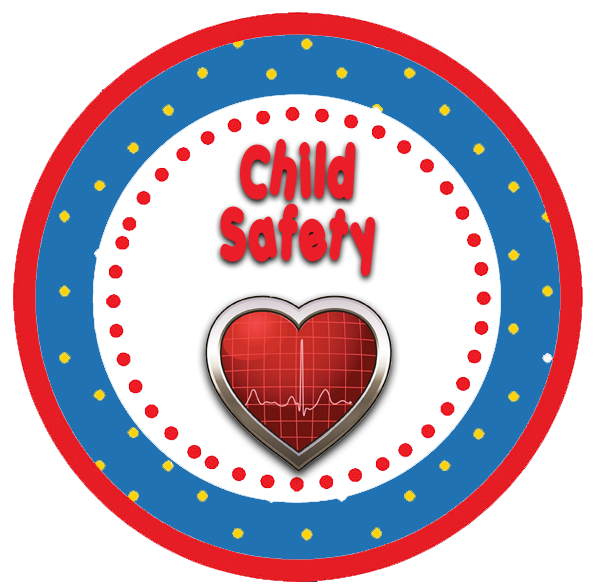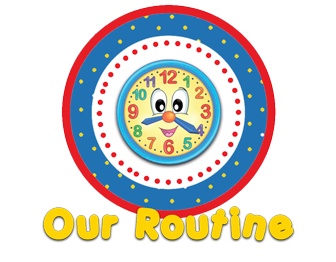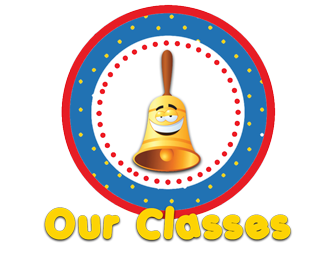|
JOIN OUR MAILING LIST |

Child Safety First
0-1 year of age
When a baby becomes part of your family, it is time to make sure that your home is a safe place. Look around your home for things that could be dangerous to your baby. As a parent, it is your job to ensure that you create a safe home for your baby. It also is important that you take the necessary steps to make sure that you are mentally and emotionally ready for your new baby. Here are a few tips to keep your baby safe:
-
Do not shake your baby―ever! Babies have very weak neck muscles that are not yet able to support their heads. If you shake your baby, you can damage his brain or even cause his death.
-
Make sure you always put your baby to sleep on her back to prevent sudden infant death syndrome (commonly known as SIDS). Read more about new recommendations for safe sleep for infants here.
-
Protect your baby and family from second-hand smoke. Do not allow anyone to smoke in your home.
-
Place your baby in a rear-facing car seat in the back seat while he is riding in a car. This is recommended by the National Road Safety Administration.
-
Prevent your baby from choking by cutting her food into small bites. Also, don’t let her play with small toys and other things that might be easy for her to swallow.
-
Don’t allow your baby to play with anything that might cover her face.
-
Never carry hot liquids or foods near your baby or while holding him.
-
Vaccines (shots) are important to protect your child’s health and safety. Because children can get serious diseases, it is important that your child get the right shots at the right time. Talk with your child’s doctor to make sure that your child is up-to-date on her vaccinations.
1-2 years of age
Because your child is moving around more, he will come across more dangers as well. Dangerous situations can happen quickly, so keep a close eye on your child. Here are a few tips to help keep your growing toddler safe:
-
Do NOT leave your toddler near or around water (for example, bathtubs, pools, ponds, lakes, whirlpools, or the ocean) without someone watching her. Fence off backyard pools. Drowning is the leading cause of injury and death among this age group.
-
Block off stairs with a small gate or fence. Lock doors to dangerous places such as the garage or basement.
-
Ensure that your home is toddler proof by placing plug covers on all unused electrical outlets.
-
Keep kitchen appliances, irons, and heaters out of reach of your toddler. Turn pot handles toward the back of the stove.
-
Keep sharp objects such as scissors, knives, and pens in a safe place.
-
Lock up medicines, household cleaners, and poisons.
-
Do NOT leave your toddler alone in any vehicle (that means a car, truck, or van) even for a few moments.
-
Store any guns in a safe place out of his reach.
-
Keep your child’s car seat rear-facing as long as possible. According to the National Highway Traffic Safety Administration it’s the best way to keep her safe. Your child should remain in a rear-facing car seat until she reaches the top height or weight limit allowed by the car seat’s manufacturer. Once your child outgrows the rear-facing car seat, she is ready to travel in a forward-facing car seat with a harness.
2-3 years of age
Because your child is moving around more, he will come across more dangers as well. Dangerous situations can happen quickly, so keep a close eye on your child. Here are a few tips to help keep your growing toddler safe:
-
Do NOT leave your toddler near or around water (for example, bathtubs, pools, ponds, lakes, whirlpools, or the ocean) without someone watching her. Fence off backyard pools. Drowning is the leading cause of injury and death among this age group.
-
Encourage your toddler to sit when eating and to chew his food thoroughly to prevent choking.
-
Check toys often for loose or broken parts.
-
Encourage your toddler not to put pencils or crayons in her mouth when colouring or drawing.
-
Do NOT hold hot drinks while your child is sitting on your lap. Sudden movements can cause a spill and might result in your child’s being burned.
-
Make sure that your child sits in the back seat and is buckled up properly in a car seat with a harness.
3-5 years of age
As your child becomes more independent and spends more time in the outside world, it is important that you and your child are aware of ways to stay safe. Here are a few tips to protect your child:
-
Tell your child why it is important to stay out of traffic. Tell him not to play in the street or run after stray balls.
-
Be cautious when letting your child ride her tricycle. Keep her on the sidewalk and away from the street and always have her wear a helmet.
-
Check outdoor playground equipment. Make sure there are no loose parts or sharp edges.
-
Watch your child at all times, especially when he is playing outside.
-
Be safe in the water. Teach your child to swim, but watch her at all times when she is in or around any body of water (this includes kiddie pools).
-
Teach your child how to be safe around strangers.
-
Keep your child in a forward-facing car seat with a harness until he reaches the top height or weight limit allowed by the car seat’s manufacturer. Once your child outgrows the forward-facing car seat with a harness, it will be time for him to travel in a booster seat, but still in the back seat of the vehicle. The National Highway Traffic Safety Administration has information on how to keep your child safe while riding in a vehicle.
6-8 years of age
More physical ability and more independence can put children at risk for injuries from falls and other accidents. Motor vehicle crashes are the most common cause of death from unintentional injury among children this age.
-
Protect your child properly in the car.
-
Teach your child to watch out for traffic and how to be safe when walking to school, riding a bike, and playing outside.
-
Make sure your child understands water safety, and always supervise her when she’s swimming or playing near water.
-
Supervise your child when he’s engaged in risky activities, such as climbing.
-
Talk with your child about how to ask for help when she needs it.
-
Keep potentially harmful household products, tools, equipment, and firearms out of your child’s reach.
9-11 years of age
More independence and less adult supervision can put children at risk for injuries from falls and other accidents. Here are a few tips to help protect your child:
-
Protect your child in the car. The National Road Safety Administration recommends that you keep your child in a booster seat until he is big enough to fit in a seat belt properly. Remember: your child should still ride in the back seat until he or she is 12 years of age because it’s safer there. Motor vehicle crashes are the most common cause of death from unintentional injury among children of this age.
-
Know where your child is and whether a responsible adult is present. Make plans with your child for when he will call you, where you can find him, and what time you expect him home.
-
Make sure your child wears a helmet when riding a bike or a skateboard or using inline skates; riding on a motorcycle, snowmobile, or all-terrain vehicle; or playing contact sports.
-
Many children get home from school before their parents get home from work. It is important to have clear rules and plans for your child when she is home alone.
12-14 years of age
You play an important role in keeping your child safe―no matter how old he or she is. Here are a few tips to help protect your child:
-
Make sure your teen knows about the importance of wearing seatbelts. Motor vehicle crashes are the leading cause of death among 12- to 14-year-olds.
-
Encourage your teen to wear a helmet when riding a bike or a skateboard or using inline skates; riding on a motorcycle, snowmobile, or all-terrain vehicle; or playing contact sports. Injuries from sports and other activities are common.
-
Talk with your teen about the dangers of drugs, drinking, smoking, and risky sexual activity. Ask him what he knows and thinks about these issues, and share your thoughts and feelings with him. Listen to what she says and answer her questions honestly and directly.
-
Talk with your teen about the importance of having friends who are interested in positive activities. Encourage her to avoid peers who pressure her to make unhealthy choices.
-
Know where your teen is and whether an adult is present. Make plans with him for when he will call you, where you can find him, and what time you expect him home.
-
Set clear rules for your teen when she is home alone. Talk about such issues as having friends at the house, how to handle situations that can be dangerous (emergencies, fire, drugs, sex, etc.), and completing homework or household tasks.
15-17 years of age
You play an important role in keeping your child safe―no matter how old he or she is. Here are a few ways to help protect your child:
-
Talk with your teen about the dangers of driving and how to be safe on the road. You can steer your teen in the right direction. "Parents Are the Key" has steps that can help. Motor vehicle crashes are the leading cause of death from unintentional injury among teens, yet few teens take measures to reduce their risk of injury.
-
Remind your teen to wear a helmet when riding a bike, motorcycle, or all-terrain vehicle. Unintentional injuries resulting from participation in sports and other activities are common.
-
Talk with your teen about suicide and pay attention to warning signs. Suicide is the third leading cause of death among youth 15 through 24 years of age.
-
Talk with your teen about the dangers of drugs, drinking, smoking, and risky sexual activity. Ask him what he knows and thinks about these issues, and share your feelings with him. Listen to what he says and answer his questions honestly and directly.
-
Discuss with your teen the importance of choosing friends who do not act in dangerous or unhealthy ways.
-
Know where your teen is and whether a responsible adult is present. Make plans with her for when she will call you, where you can find her, and what time you expect her home.
| Back | Back to top |









